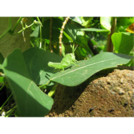
In this lesson students will explore the physical characteristics of insects and how they camouflage themselves to avoid being eaten by predators.
- Subject:
- Life Science
- Material Type:
- Lesson Plan
- Author:
- Out Teach
- Date Added:
- 07/22/2021

In this lesson students will explore the physical characteristics of insects and how they camouflage themselves to avoid being eaten by predators.

This activity is designed to teach the attributes of each coin (penny, nickel, dime and quarter), including physical characteristics and value.

Through an overview of the components of the hydrologic cycle and the important roles they play in the design of engineered systems, students' awareness of the world's limited fresh water resources is heightened. The hydrologic cycle affects everyone and is the single most critical component to life on Earth. Students examine in detail the water cycle components and phase transitions, and then learn how water moves through the human-made urban environment. This urban "stormwater" water cycle is influenced by the pervasive existence of impervious surfaces that limit the amount of infiltration, resulting in high levels of stormwater runoff, limited groundwater replenishment and reduced groundwater flow. Students show their understanding of the process by writing a description of the path of a water droplet through the urban water cycle, from the droplet's point of view. The lesson lays the groundwork for rest of the unit, so students can begin to think about what they might do to modify the urban "stormwater" water cycle so that it functions more like the natural water cycle. A PowerPoint® presentation and handout are provided.
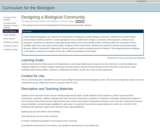
In this Physical Geography Lab, students are responsible for designing a simple biological community.
(Note: this resource was added to OER Commons as part of a batch upload of over 2,200 records. If you notice an issue with the quality of the metadata, please let us know by using the 'report' button and we will flag it for consideration.)
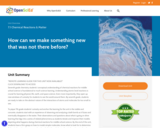
To pique students’ curiosity and anchor the learning for the unit in the visible and concrete, students start with an experience of observing and analyzing a bath bomb as it fizzes and eventually disappears in the water. Their observations and questions about what is going on drive learning that digs into a series of related phenomena as students iterate and improve their models depicting what happens during chemical reactions. By the end of the unit, students have a firm grasp on how to model simple molecules, know what to look for to determine if chemical reactions have occurred, and apply their knowledge to chemical reactions to show how mass is conserved when atoms are rearranged.

This is an outline for how one could incorporate quantum mechanics into atomic structure. Students really seem to get hooked on it and it makes atomic structure way more interesting to teach.

Students learn how young people in Washington exercised their rights and responsibilities through “fish-in” protests to fight for tribal fishing rights in the 1960s. Students use this example of civic engagement to reflect on their rights and responsibilities today, then begin to consider the unit-driving question: How can we use social media to engage community members on issues of injustice? Working in teams, students examine a case study on one of three critical issues: natural resources, the environment, or hazard preparedness. The case studies help students understand how social media can be used to raise awareness and promote action. Finally, teams create a social media campaign that engages their local elected officials and community on an issue of social and environmental justice.
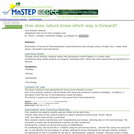
Examination of Second of Thermodynamics (endo/exothermic and entropy) using a thought story, rubber band inquiry, discrepant event and lecture.

A simulation-based activity on Faraday's Law using Phet Simulation-Electromagnetic Lab.
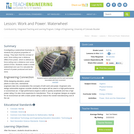
Investigating a waterwheel illustrates to students the physical properties of energy. They learn that the concept of work, force acting over a distance, differs from power, which is defined as force acting over a distance over some period of time. Students create a model waterwheel and use it to calculate the amount of power produced and work done.
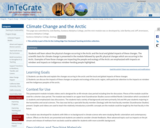
Students will learn about the physical changes occurring in the Arctic and the local and global physical, climatic, and human impacts of these changes.
(Note: this resource was added to OER Commons as part of a batch upload of over 2,200 records. If you notice an issue with the quality of the metadata, please let us know by using the 'report' button and we will flag it for consideration.)

This is an activity about the electromagnetic spectrum and how light is split into its component frequencies or colors. Using a diffraction grating, learners will observe four different light sources and sketch their spectra. This activity requires access to a sodium vapor or mercury vapor light and two neon signs of differing color, as well as diffraction grating material. This is Astronomy Activity 2 in the Space Update collection of activities.

OpenPhys is an interactive textbook on modern physics and medical radiation. It is formatted as a map with the main page features lesson tiles which can be clicked to open each lesson's concept map. Each concept map can be navigated with basic content at the top and deeper content at the bottom.
More information about the authoring team available here: http://openphys.med.ualberta.ca/Instructions/Credits

This course provides an introduction to the study of environmental phenomena that exhibit both organized structure and wide variability—i.e., complexity. Through focused study of a variety of physical, biological, and chemical problems in conjunction with theoretical models, we learn a series of lessons with wide applicability to understanding the structure and organization of the natural world. Students also learn how to construct minimal mathematical, physical, and computational models that provide informative answers to precise questions.
This course is appropriate for advanced undergraduates. Beginning graduate students are encouraged to register for 12.586 (graduate version of 12.086). Students taking the graduate version complete different assignments.
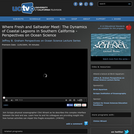
Join Scripps physical oceanographer Clint Winant as he describes this complex interface between the land and sea. Learn how he and his colleagues are providing insight into how human activities can impair this fragile ecosystem. (54 minutes)

Students explore the chemical identities of polymeric materials frequently used in their everyday lives. They learn how chemical composition affects the physical properties of the materials that they encounter and use frequently, as well as how cross-linking affects the properties of polymeric materials.
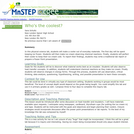
This activity is a classroom lab making coolers to investigate which type of material is the best insulator.
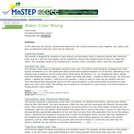
This activity is a classroom activity where kindergarten students mix the primary colors together to create the secondary colors using pipettes and well trays.
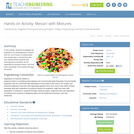
In this activity, students investigate the properties of a heterogeneous mixture, trail mix, as if it were a contaminated soil sample near a construction site. This activity shows students that heterogeneous mixtures can be separated by physical means, and that when separated, all the parts will equal the whole.

This is a multimedia-based presentation of the Duality of Quantum Objects.
This presentation uses the so-called ACAT method to explain complex content.
The tool Is menue-driven and offers repetition of taught content.